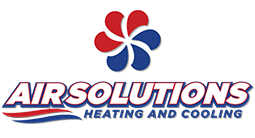How Do Heat Pumps Work to Cool and Heat Your Home?
Many residents of Sumter, SC, have a heat pump in their homes, but do they truly understand how it works? Having a clear understanding of the process is important as a homeowner. Read on to find out what a heat pump is and how it works.
What Is a Heat Pump?
The heat pump in your home is there to take the energy generated by heat and send it to the thermal reservoir. It’s the job of the pump to take thermal energy from a warm place and send it to a place that is cold. This is how it keeps your home warm during the winter months.
People often believe that this type of pump only warms your house up. Yet, it is also capable of taking cold air and moving it from its original location into your home. These pumps are just as effective at keeping the inside of the home cool during summer.
What Makes Up a Heat Pump?
The air handler and condenser work together to keep the pump functional. While the handler is responsible for sending the air to where it’s needed, the condenser ensures the system always has a flow of refrigerant.
Features of Heat Pumps
There are a few features that you should be familiar with. One of them is the sound level. Heat pumps can become extremely noisy, and this can cause problems, so most homeowners find it preferable to have a pump that doesn’t make an excessive amount of noise.
Certain parts of the heater can offer a quieter experience. Insulation in the cabinet, as well as the fans, can help the system pump air quietly. Each system has a number rating, with the highest number being the loudest sound.
For most people, energy efficiency is the top feature they are looking for in their heat pump. Each system also receives a Seasonal Energy Efficiency Ratio (SEER) and Heating Seasonal Performance Factor (HSPF) that lets you know how energy efficient a heat pump is. The SEER rating is for cooling and HSPF is for cooling. If a heat pump’s HSPF is greater than 8, then that means the heat pump has high efficiency. The higher the SEER rating, the greater the efficiency. Ratings start at 13 and max out at 22. A 22 SEER rating indicates the highest possible energy efficiency.
Characteristics of Heat Pumps
The characteristics of heat pumps are a constant supply of heat, the run-off of water, and outdoor defrosting of the coils. The air supply that a heat pump releases into your house at once is minimal. It provides enough heat to warm your home without making it uncomfortably hot.
While your home is being heated, the pump dispenses water through the outdoor coils, which results from condensed moisture found in the air. Heat pump systems have the ability to defrost in order to maintain their ability to heat the home. Without being able to defrost, systems wouldn’t be able to perform their intended function.
Two Types of Heat Pumps
There are two types of heat pumps you should be familiar with. One uses the ground as its source while the other uses air. Most homeowners prefer to have an air-source heat pump.
Cooling and heating your home with an air-source pump is easier than doing it with a ground source. Typically referred to as a geothermal heat pump, the ground source type runs more efficiently than an air-source pump. Since the ground is generally consistent throughout the seasons of the year, geothermal heat pumps typically keep your home comfortable all year long.
Inverter Technology
Newer heat pumps have inverter technology built into them. This enables the pump’s motor using a computer built into the system. The computer has several speeds to choose from when operating the compressor. The internal sensor enables the heat pump to work while using as little energy as possible.
Heat pumps are an energy-efficient and reliable solution to controlling the temperature in your home year-round. To keep your home comfortable all year long, call Air Solutions Heating And Cooling to have a heat pump installed.
Image provided by iStock
